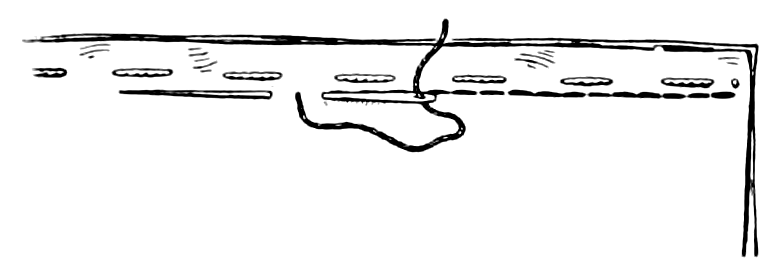The backstitch: a timeless classic in designer fashion
In the constellation of embroidery techniques used in haute couture, backstitch holds a prominent place because of its ability to combine technical rigor and creative flexibility. It is a linear, compact and durable stitch, ideal for outlining contours, writing decorative text or creating graphic effects on fine fabrics.
Despite its apparent simplicity, the backstitch requires a skilled hand to achieve flawless results. Each pass of the needle must be precise, calibrated, able to follow curves and straight lines without visual interruption. This makes it a solid foundation on which to build sartorial projects of excellence.
A bridge between tradition and contemporaneity
The appeal of backstitch also lies in its extraordinary ability to adapt to different aesthetics. Used in the past to decorate period trousseaus and linens, today it lends itself to much more modern interpretations.
In a haute couture garment, it can be employed to emphasize silhouettes, define graphic elements, or add a minimal but striking detail. When combined with other techniques, it becomes a powerful tool for generating textural and stylistic contrasts.

A fine example is the combination with quilted and matellassé embroidery, where the three-dimensionality of the work creates an interesting dynamic with the linearity of the backstitch. In this case, the stitch performs a visual “frame” function that enhances the volumes without weighing down the overall design.
Technique and materials: a balance to be calibrated
The performance of the backstitch is strongly influenced by the choice of materials. Metallic threads, mercerized cottons, colored silks: each thread tells a different story and gives the stitch its own light. The textile support is also crucial: on tulle and organza the stitch appears almost suspended, while on velvet or leather it takes on a stronger, more structured character.
In the context of haute couture collections, it is crucial that the technique be adapted to the overall design, in an ongoing dialogue between stylist, patternmaker and embroiderer. The direction of the stitch, its density, even the angle of the needle can radically change the final effect.
Decoration and textile storytelling
Backstitch is often employed to tell visual stories through floral patterns, calligraphy or graphic miniatures. It is here that its precision finds full expression, allowing the creation of decorative elements that become an integral part of the garment's stylistic narrative.
In combination with more complex techniques, such as lace-effect embroidery, backstitching can act as a trait d'union between full surfaces and calibrated transparencies, defining edges and details with understated elegance.
Digital innovation and artistic applications
In recent years, backstitch has found a new dimension through integration with digital technologies for programming and automating embroidery. CNC machines now make it possible to reproduce this stitch with extreme fidelity even on complex surfaces, opening up new design perspectives.
However, the appeal of manual execution remains unmatched when it comes to high fashion. The imperceptible variability of the human hand gives embroidery a soul, a unique vibration that resists the standardization of seriality.
Conclusion
Far from being a mere accessory technique, backstitch is a valuable ally in the creation of haute couture garments that combine aesthetics and craftsmanship. Its ability to integrate with precious materials, advanced technologies, and contemporary stylistic visions still makes it one of the most versatile tools in the repertoire of signature embroidery.